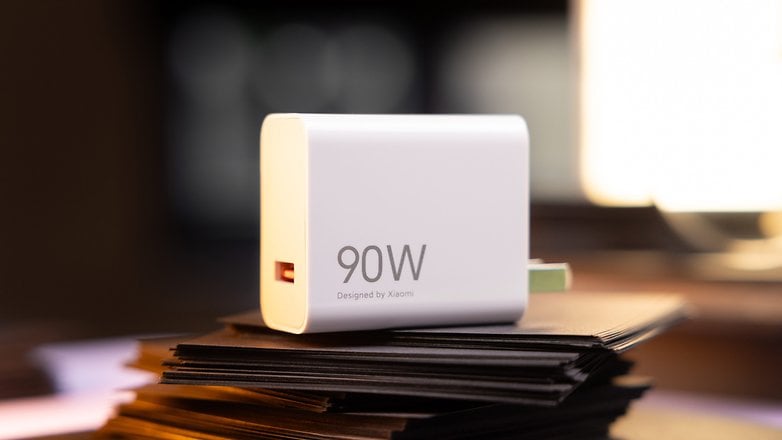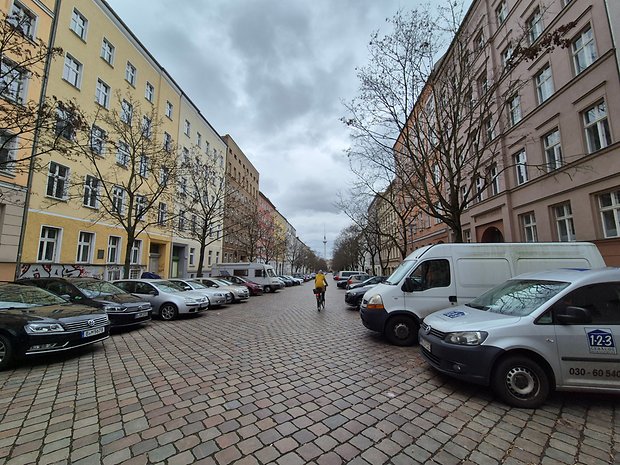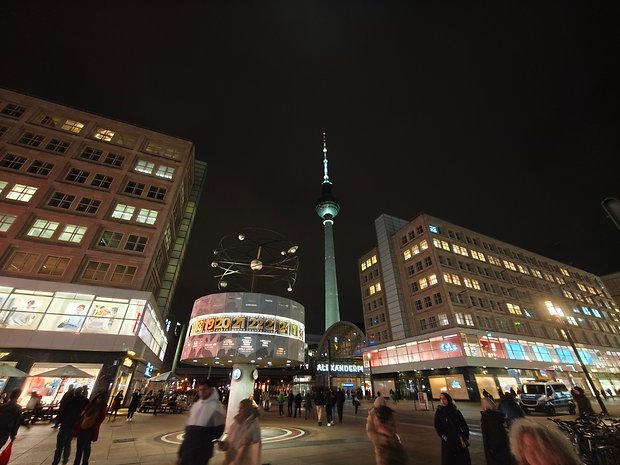Xiaomi 14 vs. Samsung Galaxy S24(+): Flagship Smartphones Compared


The Xiaomi 14 has arrived! Today, the flagship smartphone takes on the Samsung Galaxy S24 and its big brother, the Galaxy S24+, in our nextpit comparison. We compare the technical specifications, talk about the operating system, features, and, of course, the prices of these premium phones. In the end, we (keep your fingers crossed!) know whether Xiaomi can beat the South Koreans and their Galaxy handsets at the finish line.
After Samsung lifted the curtain on its Galaxy S24 series back in January 2024, the time has now come for the globally available Xiaomi 14 series models at MWC in Barcelona. This means we now know the flagship series from both manufacturers and therefore pitted them in a head-to-head fight in the nextpit arena. Bear in mind that the Xiaomi 14 is unavailable in the US, at least officially.
Xiaomi 14 and Samsung Galaxy S24(+): Technical specifications compared
| Xiaomi's basic flagship | Samsung's basic flagship | Samsung's Plus variant | |
|---|---|---|---|
| Device | |||
| Image |

|

|

|
| Review |
|
|
|
| Display |
|
|
|
| SoC |
|
|
|
| RAM |
|
|
|
| Storage |
|
|
|
| OS |
|
|
|
| Camera |
|
|
|
| Selfie camera |
|
|
|
| Battery |
|
|
|
| Connectivity |
|
|
|
| IP certification |
|
|
|
| Dimensions and weight |
|
|
|
| Check offer* |
Xiaomi 14 vs. Samsung Galaxy S24(+): Display and design
"How typical of Samsung and Xiaomi," I thought when I took a first look at both models. The backs of the two handsets provided me with the free-standing camera elements on the Galaxy S24 and the obligatory rectangular camera island on the Xiaomi 14. In each case, the manufacturers continue to use the established design language of their respective series.

Measuring 6.36 inches across diagonally, the Xiaomi 14 offers a slightly larger display with a resolution of 2,670 x 1,200 px. Both the 6.2 inch screen and 2,340 x 1,080 px resolution are lower on the Galaxy S24. If you like to have a larger screen from Samsung, you can opt for the Galaxy S24+, which has a 6.6-inch screen and a 3,088 x 1,440 px resolution. These proportions are also reflected in the overall dimensions, with the significantly larger S24+ tipping the scales at three grams more than the Xiaomi 14.
With a variable 1-120 Hertz refresh rate across all three panels, the two Samsung displays achieve a peak brightness of 2,600 nits with the Xiaomi 14 even touching 3,000 nits. There is another similarity in the choice of materials: All three devices have glass at the front and back. Samsung relies on Corning Gorilla Glass Victus+ on both sides, while Xiaomi also uses Gorilla Glass in front but the slightly older Victus glass behind. All three devices carry IP68 certification which offers water- and dust-resistance.

Is there a clear winner here? I don't think so. Rather, you, the consumer, are the winner regardless of which device you choose. The reason? The AMOLED displays, choice of materials used, and build quality of all three are exactly what you would expect from a premium modern-day smartphone.
Xiaomi 14 vs. Samsung Galaxy S24(+): SoC and Performance
Of course, only the finest are served on a silver platter here in the form of the Qualcomm Snapdragon 8 Gen 3, as is typical for high-end smartphones. Oh, wait! I take that back! While Xiaomi equipped its flagship series with this SoC, Samsung complicates things a little and splits the S24's processor choice depending on the market:
- North America: Snapdragon 8 Gen 3
- Rest of the world: Exynos 2400
A look at the benchmark test table below will tell you what this means. Basically, the third-generation Snapdragon 8 in the Xiaomi 14 beats the two Samsungs soundly across all benchmarks in terms of raw performance:
| Galaxy S24 (Exynos 2400) |
Galaxy S24+ (Exynos 2400) |
Xiaomi 14 (Snapdragon 8 Gen 3) |
|
|---|---|---|---|
| 3DMark Wild Life Extreme Stress Test |
|
|
|
| 3DMark Solar Bay Stress Test |
|
|
|
| Geekbench |
|
|
|
In everyday use, however, you won't notice any major differences in performance. At best, the Xiaomi 14 should only perform noticeably better when gaming. Apart from that, it is without a doubt across all three handsets that they should not pose any problems for anyone in normal use.
It was noticeable that the Xiaomi 14 sometimes became very hot in the benchmark tests, but not during normal use. With the Exynos 2400, one must take into account that thermal throttling reduces performance during extensive gaming and the less energy-efficient SoC also places more strain on the battery.
Let's move on to the memory: Samsung offers 8 GB of LPDDR5X RAM in the base model and 12 GB in the Plus version. The Xiaomi 14 is only available in Europe with 12 GB LPDDR5X. In terms of storage space, the Chinese device offers a choice between 256 and 512 GB, both of which are UFS 4.0 memory. The same configuration can also be found in the Galaxy S24+, while the S24 offers a maximum of 256 GB (UFS 4.0) and the smaller 128 GB version relies on the slower UFS 3.1 memory.
Xiaomi also has the edge when it comes to connectivity, as the Xiaomi 14 already supports Wi-Fi 7 and Bluetooth 5.4 (Wi-Fi 6E and Bluetooth 5.3 for the Exynos-powered Samsung), but the Galaxy S24+ arrives with UWB support.
Xiaomi 14 vs. Samsung Galaxy S24(+): Software
Software is pretty much Samsung's domain in the Android world. This year, the South Korean company has underpinned this with longer support, which has now been extended to an outstanding seven years for both Android updates and security patches. However, Xiaomi continues to improve in this department: the Xiaomi 14 now offers 4 years of Android updates and 5 years of security updates.
Both manufacturers offer their smartphones with Android 14 right out of the box, where Samsung relies on its OneUI 6.1 skin while Xiaomi is now using the new HyperOS instead of MIUI, albeit not having fixed the bloatware problem. I don't want to say much about the quality of the two software variants, because both are very popular and each of them has many strengths to adapt your smartphones to your needs.
Finally, let me just say that Samsung is playing the "artificial intelligence" card much more obviously with Galaxy AI, which is reflected in some exciting features. However, it is also down to personal taste as to whether you would incorporate this into your daily use pattern or consider it more of a gimmick.
Xiaomi 14 vs. Samsung Galaxy S24(+): Camera
The camera is often an important purchase criterion, especially for the more expensive smartphones like the ones discussed here. Samsung fans were probably disappointed when they realized that they were provided with the same triple camera array that has been in action on both models since the Galaxy S23 series.

Even if the design looks modern albeit with the same camera sensors, this means we see the 1/1.56-inch 50-megapixel Isocell GN3 sensor in the main camera. There is also the 3x telephoto camera with a 1/3.94-inch 10 MP sensor and finally, an ultra-wide angle 12 MP camera with a 1/2.55-inch sensor.
- Also about cameras: These are the best camera smartphones of 2024 to date
The Xiaomi 14 is spearheaded by the 1.31-inch 50 MP sensor known as "Light Hunter 900" with f/1.6 lens, which is also manufactured by Samsung. In addition, there is a "Leica Floating" 3.2x telephoto 50 MP camera equipped with f/2.0 aperture and finally, an ultra-wide angle 50 MP camera with a 14 mm focal length and f/2.2 aperture. Once again, Xiaomi edges out in its collaboration with Leica, as the camera array is also prominent in its square island.

Samsung offers a 12 MP shooter in front for both handsets, whereas Xiaomi has a 32 MP shooter. I am sure you do not need me to point out that the number of megapixels is by no means a decisive factor in the quality of the photos. In fact, selfies on the Galaxy S24 and Galaxy S24+ are even more convincing than on the Xiaomi 14. You can take really amazing photos with the main camera on all three devices, just as they are all weak with the ultra-wide angle camera.
Before I drone on, why don't you form your impression and click through our galleries?
Sample Samsung Galaxy S24 photos
Sample Samsung Galaxy S24+ photos
Sample Xiaomi 14 photos
Xiaomi 14 vs. Samsung Galaxy S24(+): Battery and Fast Charging
The "battery and fast charging" category is clearly Xiaomi's territory. We see this time and again in the Xiaomi 14, which has a battery capacity of 4,610 mAh. Unlike Samsung, Xiaomi includes a charger in the packaging, so you can go full throttle with it: You can charge the Xiaomi 14 at 90 W, where even wirelessly charging it is still performed at an amazing 50 W. Reverse wireless charging is also available, letting you can charge your wireless earbuds at 10 W without missing a beat.

With Samsung, everything is a little more spartan. Battery capacity was specified at 4,000 mAh (S24) or 4,900 mAh (S24+). The basic model struggles with a maximum charging rate of 25 W, while the Galaxy S24+ offers 45 W charging, but is still a smidgen slower than its Xiaomi counterpart sans a cable. Wireless charging is available on both Samsung devices at 15 W, with reverse wireless charging at 4.5 W.
In Boost mode, the Xiaomi 14 charges from 0 to 100 percent within 30 minutes, compared to approximately 70 minutes for the Samsungs, which is a noticeable difference and a clear victory for Xiaomi when it comes to the battery and charging speed.
Xiaomi 14 vs. Samsung Galaxy S24(+): Price and Availability
Samsung starts at a lower price point, as the Galaxy S24 is available from €899 according to the MSRP, while Xiaomi starts at €999.90 and thus costs €100 more. Don't let that fool you though, because if we compare the same storage variants, the Xiaomi 14 256 GB model is €10 cheaper than the €1,009 that Samsung asks for its handset.
You can see an overview of the recommended retail prices of all three models below. The US pricing for the two Samsung handsets is listed in brackets.
Price overview
| Device | Memory | Device price |
|---|---|---|
| Samsung Galaxy S24 | 128 GB | €899.00 ($799.99) |
| Samsung Galaxy S24 | 256 GB | €1,009.00 ($859.99) |
| Samsung Galaxy S24+ | 256 GB | €1,149.00 ($999.99) |
| Samsung Galaxy S24+ | 512 GB | €1,319.00 ($1,199.99) |
| Xiaomi 14 | 256 GB | €999.90 |
| Xiaomi 14 | 512 GB | €1,099.90 |
Samsung has the advantage that the devices have been on the market since January with retail prices dropping based on different retailers. Over in Europe, according to Idealo, the 128 GB Galaxy S24 model is already available for less than €740, while the Galaxy S24+ is currently trading at slightly above the €1,000 mark for the 256 GB model.
Let's now move on to the conclusion which I would like to comment on with a somewhat vague "You can't go wrong with any of the three models". But hey, it can be a bit more precise, right? Personally, Samsung's style is more visually appealing to me as the huge camera island on Xiaomi's handset makes it look less than premium.
In terms of workmanship, all three devices are convincing. In terms of quality, the gap between Xiaomi and Samsung has narrowed considerably. The displays are also impressive across the board, although the different sizes could tip the scales in a particular direction if you are making a purchase decision.
I also see slight advantages for Samsung when it comes to the camera. Both manufacturers share the strengths of the main camera during the day and the weaknesses of the ultra-wide angle lens. When it comes to night mode and selfies, the technology giant from South Korea is slightly ahead, although it is annoying that so little has changed in terms of cameras since 2023.
Xiaomi, on the other hand, plays its trump cards in terms of performance and battery, whereas Samsung falls behind with the Exynos 2400 and the stone-age charging speed. That leaves the software department, which offers exciting and feature-rich skins in both cases. In this case, the longer support and fewer bloatware swings the pendulum back in Samsung's favor.
In view of the price, there is only one crystal-clear conclusion: know your personal preference and the overall package that suits you best to discover your favorite. I would find that difficult to do but it's not about my personal taste.
In any case, we can state that Xiaomi has now established itself at the very top of the Android league and does not have to cower behind Samsung in any respect, and certainly not behind other manufacturers.
Do you share my impressions and thoughts? If so, I expect plenty of praise and recognition in the comments section. Yes, even if you have a completely different opinion, you are welcome to express them there.





















































































































































































